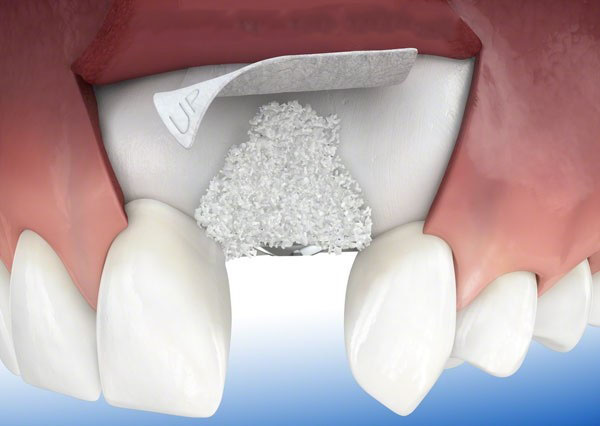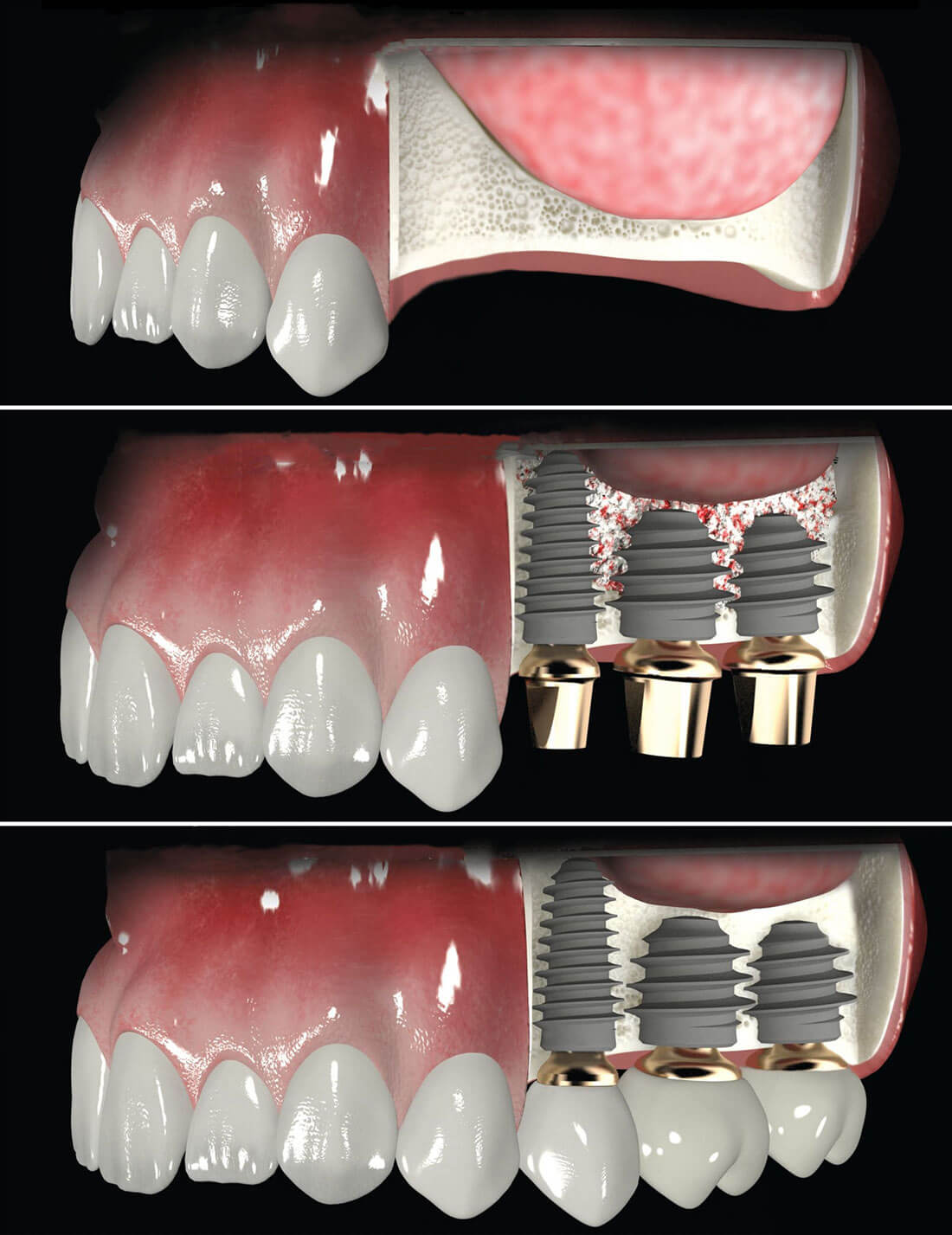Bone Grafting
When bone length and width are insufficient for implant treatment, the following bone grafting procedures are available:

Sinus Lift
A sinus lift involves surgically elevating the maxillary sinus membrane and filling the created space with bone graft material. This procedure can be performed either as an internal or external technique:
External Sinus Lift (Open Sinus Lift):Used when the upper jawbone is extremely resorbed. A window is opened from the cheek side of the upper jaw to lift the sinus membrane, and the gap is filled with bone grafts. A waiting period of 4-6 months is necessary for the bone grafts to integrate and augment the bone with new tissue.

Internal Sinus Lift (Closed Sinus Lift):Preferred when there is 4-5 mm of bone structure in the implant area. The sinus floor is lifted using specialized instruments, and the gap is filled with bone grafts. Implants are usually placed simultaneously.

Solutions with Bone Grafts and Membranes
Bone grafts are used to increase bone volume and prepare the implant area. Modern techniques allow for the enhancement of bone quality and quantity:
- Bone Defects and Anatomical Gaps: Areas such as bone defects and anatomical gaps (e.g., sinuses) are filled with bone grafts to provide a suitable foundation for implants.
- Bone Quality and Blood Supply: The success of the procedure depends on the bone volume and blood supply in the implant area. Bone grafts are the most reliable method to increase bone quantity, making it possible to place implants on newly augmented bone.
Information and Evaluation
Before the operation, you will be thoroughly informed about the type of bone augmentation needed and the amount of bone graft required, based on clinical examination and X-ray assessments.

